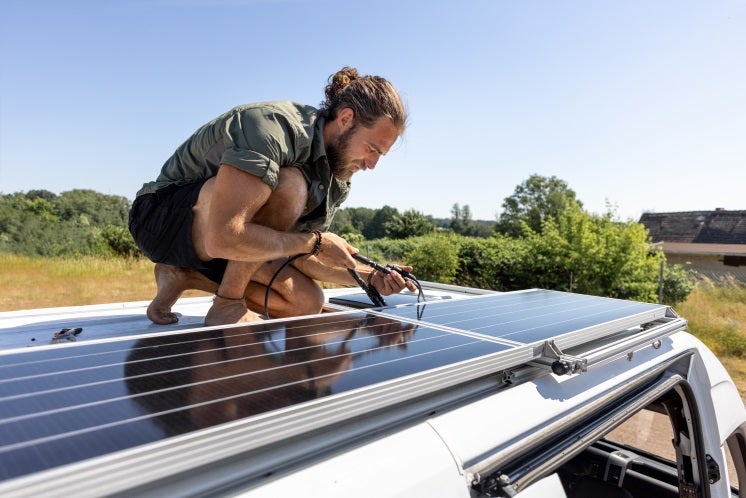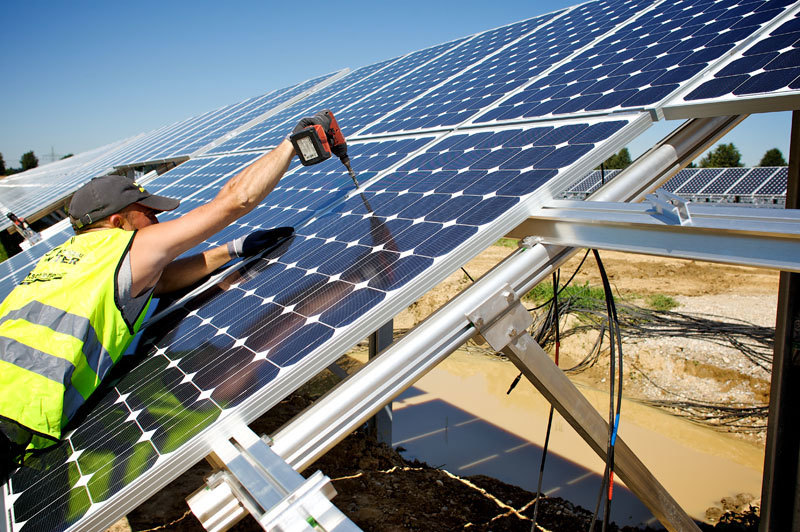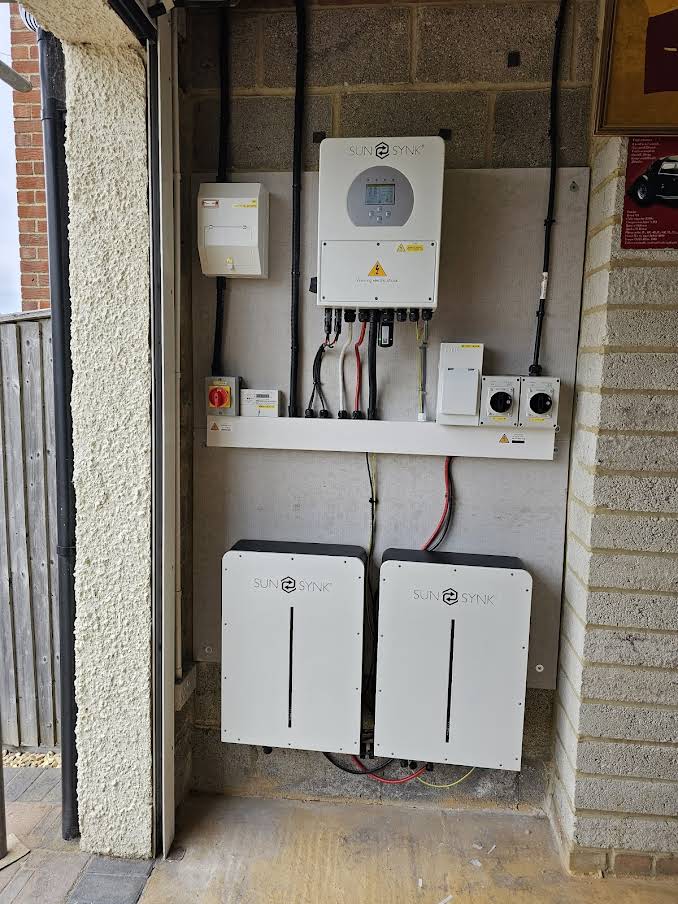No, generating your own electricity in the UK is not illegal. However, if you plan to generate, distribute, or supply electricity, you must determine if a license or exemption is needed. According to the UK government’s “Electricity Generation, Distribution, and Supply Licence Exemptions,” you may be exempt if you generate solely for personal use.
Yet, if you intend to supply others, a license is required. Attachment to safety regulations is essential. For details, contact the Health and Safety Executive (HSE). By generating your own electricity, you can decrease reliance on the national grid, potentially saving on energy bills, reducing your carbon footprint, and supporting renewable energy.
What Are the Key Factors Influencing Personal Electricity Generation in the UK?

Connection to the National Grid
Importance of Connection: Being connected to the national grid is a pivotal aspect of personal electricity generation. While it allows for a reliable power supply and the potential to sell surplus energy, it also comes with specific legal considerations.
Grid-Tied Systems: In a grid-tied system, your electricity generation is connected to the national grid. Regulations often ensure the safety of this connection, preventing issues like backfeeding excess electricity into the grid during outages, which can pose risks to utility workers.
Feed-In Tariffs and Contracts: Governments may offer feed-in tariffs or contracts for individuals who feed excess electricity into the grid. However, eligibility often requires compliance with specific technical standards and safety regulations.
Types of Renewable Energy Sources
Legal Recognition: Different renewable energy sources have distinct legal frameworks. Solar photovoltaic (PV), wind turbines, hydroelectric systems, and biomass generators each have specific regulations governing their installation, operation, and safety standards.
Permitted Installations: Which renewable energy sources are permitted for personal use is essential. Local authorities may have restrictions or guidelines to ensure that installations align with community and environmental standards.
Incentives and Grants: Governments often provide incentives or grants for specific renewable energy technologies. The legal requirements to qualify for such benefits can influence the choice of renewable energy source.
Building Regulations and Permits
Structural Considerations: Building regulations play a vital role in ensuring the structural integrity and safety of installations. Compliance is necessary to prevent hazards, and it often involves adherence to standards set by building codes and electrical safety regulations.
Permit Requirements: The scale and nature of the installation can determine the need for permits. Local authorities may require permits related to construction, environmental impact, and electrical safety. Obtaining the necessary permits ensures legal compliance throughout the project.
Environmental Impact Assessment (EIA): Larger projects may necessitate an EIA, evaluating potential environmental impacts and proposing mitigation measures. This process ensures that the environmental consequences of the electricity generation project are thoroughly assessed and addressed.
Which specific laws regulate personal electricity generation in the UK?

In the UK, personal electricity generation is regulated by various laws and regulations. Some key legal frameworks include
Electricity Act 1989: This is a fundamental piece of legislation that governs the generation, distribution, and supply of electricity in the UK. It outlines the regulatory framework for the electricity industry, including licensing requirements and the rights and obligations of electricity producers and consumers.
Microgeneration Certification Scheme (MCS): While not a law itself, the MCS is a set of standards that renewable energy technologies must meet to be eligible for government incentives. It provides certification for microgeneration products and installers, ensuring that they meet certain quality and performance standards.
Smart Export Guarantee (SEG): Introduced in 2020, the SEG is a legal requirement for large electricity suppliers in the UK. It mandates that these suppliers must offer a tariff and make payment for excess electricity generated by small-scale low-carbon generators, including individuals with solar panels or other renewable systems.
Building Regulations: The installation of renewable energy systems in homes is subject to building regulations. These regulations ensure that installations are safe, structurally sound, and comply with environmental and energy efficiency standards.
Renewable Obligation (RO): While mainly applicable to larger-scale renewable energy generators, the RO is a legal obligation requiring electricity suppliers to source a certain proportion of their electricity from renewable sources. This indirectly influences the renewable energy landscape in the country.
Energy Performance Certificates (EPC): When installing renewable energy systems in homes, compliance with EPC requirements may be necessary. EPCs assess the energy performance of a building and provide recommendations for improvements.
How much does it cost to generate your own electricity in the UK?
The cost of generating your electricity in the UK can vary based on several factors, including the type of renewable energy technology you choose, the size and capacity of the system, installation costs, and ongoing maintenance expenses.
| Renewable Energy Technology | Average Installed Cost (£/kW) | Additional Considerations |
| Solar Photovoltaic (PV) | £4,000 – £8,000 | Depends on system size, panel quality, and installation complexity. |
| Wind Turbines (Small-scale) | £2,000 – £15,000 | Cost varies based on turbine size and installation requirements. |
| Hydropower (Small-scale) | £1,000 – £5,000 | Installation cost influenced by water flow and head availability. |
| Biomass (Wood Pellet Boiler) | £5,000 – £20,000+ | Cost includes boiler installation; ongoing fuel and maintenance. |
How to Navigate the Application Process?
To navigate the application process, first, find out the rules in your area. Collect all the papers you need, like permits and agreements, and follow the steps given by the local government to make sure everything goes smoothly and is allowed.
Steps and Approvals Are Required for Personal Electricity Generation Applications
Assessment and Planning
Begin by assessing your energy needs, the available renewable resources, and the feasibility of a personal electricity generation system. Consider factors such as location, energy consumption, and the type of renewable energy source suitable for your situation.
Choose the Right Technology
Select the most appropriate technology for your needs, whether it’s solar panels, wind turbines, hydro systems, or other renewable options. Each technology comes with specific requirements and considerations.
System Design
Work with professionals to design a system that meets legal standards, safety regulations, and efficiency criteria. This step may involve determining the size of the system, the type of equipment needed, and how it integrates with your existing electrical setup.
Financial Planning
Understand the costs involved, potential return on investment, and available financial incentives or subsidies. This step is crucial for budgeting and ensuring the economic viability of your personal electricity generation project.
Apply for Necessary Approvals
Submit applications for permits and approvals required by local authorities. This may include planning permissions, building regulations approvals, and any specific permits related to the chosen technology.
Permits and Approvals Required:
- Planning Permission: Depending on the scale and nature of your installation, you may need planning permission. Larger systems or those in conservation areas may require more extensive permissions. Consult with your local planning authority to understand the specific requirements.
- Building Regulations Approval: Ensure compliance with building regulations, especially regarding the safety and structural aspects of your installation. This approval is essential to guarantee that your system meets established safety standards.
- Grid Connection Approval: If your system is connected to the national grid, you may need approval from the Distribution Network Operator (DNO) or the local grid company. This ensures a safe and legal connection to the grid.
- Environmental Permits: For certain installations, especially those involving hydroelectric systems, you may need environmental permits. These permits address potential impacts on water bodies and ecosystems.
- Microgeneration Certification Scheme (MCS): While not a permit, obtaining MCS certification can enhance the eligibility of your system for government incentives and assure compliance with industry standards.
FAQ
What is the cheapest way to produce electricity at home?
Generating electricity using solar panels is often one of the most cost-effective options for homeowners. Solar technology has become more affordable, providing a sustainable and economical solution for residential energy needs.
How do I power my house off the grid?
To power your house off the grid, invest in renewable energy sources like solar panels or wind turbines. Install a battery storage system to store excess energy for use during periods without sunlight or wind.
How can I make my own electricity at home?
You can make your own electricity at home by installing solar panels or a small wind turbine. These systems convert natural resources into electrical power, allowing you to generate energy for your household.
How much electricity can I generate at home?
The amount of electricity you can generate at home depends on factors like the size of your renewable energy system and local conditions. A 1-kilowatt system can generate approximately 850 kilowatt-hours per year, a 2-kilowatt system can produce about 1,700 kilowatt-hours annually, and a 5-kilowatt system can produce around 4,500 kilowatt-hours per year.
What is the simplest way to generate electricity?
For simplicity, solar panels are one of the easiest ways to generate electricity at home. They require minimal maintenance and can be installed on rooftops or in open spaces with access to sunlight.
How many solar panels does it take to power a house?
The number of solar panels needed to power a house varies based on factors like energy consumption, sunlight availability, and panel efficiency. On average, a residential solar installation might require 20 to 25 panels.
How many batteries do you need to power a house?
The number of batteries needed to power a house depends on energy consumption and the duration of power needs during periods without sunlight or wind. Typically, a residential solar setup might require several batteries for effective energy storage.
Final words
To sum up, making your own electricity at home in the UK is totally okay and a good choice for the environment. Just make sure to follow the rules, get the right permits, and keep things safe. This way, you can enjoy having your own power while being responsible and eco-friendly. Stay informed, stay legal, and power up responsibly!”











